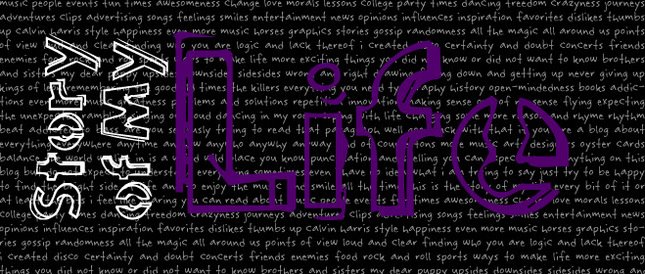Let me begin by sharing some of the knowledge we acquired today in Advanced Graphics...
1. A name which anyone with an interest in graphic design, and particularly in film poster/title design, should know is that of Saul Bass. Genius. His prolific influence in that field is amazing. What we see in film title sequences today would not have been possible had Bass not broken out of the box of traditional film design... Here are some examples.
Man with the Golden Arm (1955)
Inspired by Bass: Catch Me if You Can
Inspired by Bass: Kiss Kiss Bang Bang
Classic by Bass: PSYCHO (1960)
Watching the title sequence just now made me realize something! Listen to the music from 00:30 onwards... remind you of something? Yep, you guessed it! Busta Rhymes, caught in the act of plagiarism! :) I may be the last person on Earth to realize that, but at least give me some credit on figuring that one out on my own :)Here's 'Gimma Some More', for comparison. (not the official video though)
That note was technically an incidental addition to the list of today's random trivia. Now, to continue with a couple of more graphic design bits.
2. Peter Saville designed album covers for Joy Division. The band changed its name to New Order when the vocalist/guitarist passed away. (The music video I had posted a couple of days back, 'Blue Monday', was by New Order). Back to Saville: he designed the cover of the album 'Power, Corruption, and Lies' (1983) using a 19th century floral painting as the background, and hardly any text... later on he had to add the band name and album title... But note the little sequence of squares in the top right-hand corner of the CD. This is actually an encrypted message written in a special color-code language that Saville developed specifically for this project. The secret encoding reads 'FACT 75'.
A classmate of mine shared that piece of info in his presentation today, but I found another source of cool cryptic CD cover info.
3. Deborah Sussman - one designer I had to present on - is amazing!! If you like innovative spatial design, color explosions, and truly inspirational works of design and architecture, take a look at her website (at the moment, you can only download their info leaflet, but it's totally worth checkin it out).
href="https://blogger.googleusercontent.com/img/b/R29vZ2xl/AVvXsEgb23OuF9E56cVIZ0sYXRW4rO5iksCaqewNWIJFAybAQ25lh8PwILb8aHPL1Ro9aD4J11ONodTyr-YadHdsYFGlJMFeM1OEogQAxH2IU14Z26gin2ymLTbe9N8zeIF-GrhAvJr-yJn-zycO/s1600-h/Fullscreen+capture+24032009+010436.bmp.jpg">

And I think that's it for now... Last but not least, on the note of old cartoons again. This time it's the Ninja Turtles wohoo! Did you know that in Germany, the classic cartoon is not called 'Teenage Mutant Ninja Turtles' but rather 'Teenage Mutant HERO Turtles'. I was looking at some old cartoon intro videos and noticed that... at first it shattered my world and all my beliefs that those are the NINJA turtles. I thought I had been delusional all my life! But no, thankfully, I wasn't completely delusional.
And apparently it wasn't just the Germans who did that name change. Here's a little something from Wiki re: NINJA vs HERO Turtles ->
"Upon TMNT's first arrival in the United Kingdom, Italy, Ireland, Sweden, Norway, Finland, France, Poland, Austria and Germany, the name was changed to "Teenage Mutant Hero Turtles" (or TMHT, for short), since local censorship policies deemed the word ninja to have excessively violent connotations for a children's program. (In Ireland, however, the first season aired as "Teenage Mutant Ninja Turtles" before changing to "Teenage Mutant Hero Turtles".)[14] Consequently, everything related to the Turtles had to be renamed before being released in these nations (comic books, video games, toys, etc.) The lyrics were also changed, such as changing "Splinter taught them to be ninja teens" to the "Splinter taught them to be fighting teens."
The policies also had other effects, such as removing use of Michaelangelo's nunchaku (which were at the time banned from appearing in even 18-rated movies) and generally toning down the usage of all the turtles' weapons. After many seasons of never using his nunchaku, they eventually disappeared entirely, replaced by a turtle shell shaped grappling hook called the "Turtle Line".
However, when the live-action movie came out in 1990, the "Ninja" of the title was kept even in the UK. In time, nunchaku scenes were retained in previously-censored movies such as those of Bruce Lee.
By the time of the 2003 TV series, these censorship policies had been abolished, and no changes have occurred in the content of the show. The name "Teenage Mutant Ninja Turtles" remained unchanged for the 2003 TV series. As a result, in the UK, the 1987 TV series is still called Teenage Mutant Hero Turtles and the 2003 TV series is called Teenage Mutant Ninja Turtles, hence a disambiguation between the two TV series."
----
And with that, ladies and gentlemen, I conclude tonight's session of 'Random trivia you may (or may not necessarily) have been interested to know'.
Time for me to go to bed and catch up on sleep.

No comments:
Post a Comment